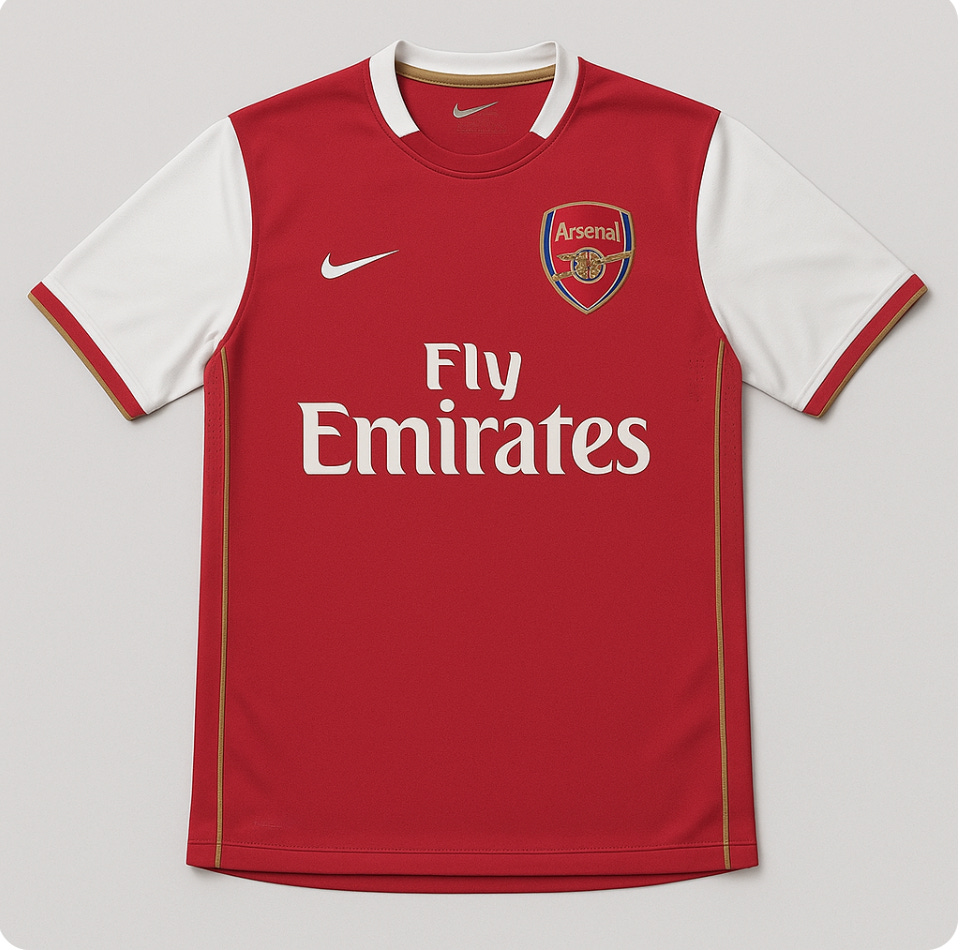How do you feel about being a “fan” of something? In the post-20th-century branding world we’ve created, wearing a logo or other indication of affiliation with a brand has become commonplace.
Some of us do this with pride: ”I wear Nike shirts, as the swoosh clearly shows! Just do it!”
Others of us do it less intentionally: “Yeah, I like these shoes and they have a swoosh on them.”
Still others are staunchly opposed to wearing anything with a visible logo. “Nope. No free advertising on my body.”
The older I get, the more reluctant I am to admit being a “fan” of something or other.
Somehow, being a “fan” seems to connote a kind of (childish?) devotion to…to…what, exactly…? A brand? A sports team? A band? Not necessarily to the object itself but to what it means in the modern world.
Those associations feel like childhood attachments, as if, as we age and mature, our affiliation with/for things is supposed to become more thoughtful, purposeful, than connections associated with the word “fan.”
After all, the word “fan” itself is short for “fanatic”; not exactly the characterization we’d choose to attach to our TV show preferences. Digging a little deeper, “fanatic” itself comes from Latin, fanaticus, a word used to describe an enthusiastic religious believer. In other words, there’s nothing “rational” about being a fan. It’s a zealous attachment to something that carries a great deal of emotional identification.
Sports teams count on fans. The geographical nature of teams assures a built-in tribal appeal for the locals versus the neighbors versus the remotes. Our town’s team is better than your town’s, and our identities are somehow enmeshed with the competition between the two. College sports drives enrollment much more than most people imagine.
Baseball grew into the “national pastime” in the 19th century based upon the territorial enmity that cities had for one another. Iconic rivalries developed between teams that took on personalities which made them bitter foes. Yankees-Dodgers. Yankees-Red Sox. Cubs-Cardinals. Ask fans of either of the teams in these dyads, and they will describe their rivals in highly personalized terms…the Yankees were always the rich kids and the Dodgers or Red Sox the scrappy underdogs trying to overcome the odds and prove their worth. Ask a Pittsburgh Steelers fan to describe her team, and she’ll come up with a profile that sounds an awful lot like an archetypal industrial blue-collar worker. “Hard-nosed, no nonsense, tough as nails” kind of thing; compare to that same person’s description of the Dallas Cowboys: “fancy, slick, nouveau riche.”
It’s no surprise, then, that we gravitate towards the teams, bands, or brands that most closely fit into our self-images of our own identities.
Almost twenty years ago, now, I developed a new “fan-tatchment.” I’d been traveling to London on business for a few years, and our group usually had the same limo driver, Tom. Tom was a classic Londoner in that his football fandom was a key element of his identity. He went on at length about his lifelong attachment to one North London club: Arsenal Football Club.
I knew nothing about English football at the time, but Tom’s stories about Arsenal and his passionate middle-aged fandom were impressive. I started thinking about the sport and reading up on its sociological and economic history. I found a book, The Ball Is Round, by David Goldblatt, that turned out to be a brilliant analysis of the role of football as the most popular sport in England and throughout the world, except for the U.S., of course.
I made a couple of YouTube videos describing my burgeoning fandom of the sport. This was at a time when English Premier League games were just starting to show up on American TV. Given the time difference, games were very often on TV in a time slot that lacked sports competition: Sunday mornings starting at 7:30! I actually saw my first Arsenal Football Club match and was instantly hooked: I was now an Arsenal fan!
I was in a couple of online communities at the time and started chatting with several Brits about my newfound favorite team. The reaction cemented my opinion that there is no clearer expression of the essence of “fandom” than amongst English (and other nationalities, I learned) football fans. Their attachment comes along with their birth certificate, and their community’s identity is deeply entwined with that of their team. The structure of English football adds high drama to the results of each match, as teams battle to get “promoted” to higher leagues, fight off “relegation” to lower ones, or win local “derbies” against long-hated rivals. Stupendous drama!
2007 Arsenal Home Kit by ChatGPT and Tom Guarriello
One day, I was surprised to receive a package from England. It turns out that one of the Arsenal fans I chatted with online decided to send me an Arsenal jersey—the 2007 version of which you see re-created above by ChatGPT.
It turns out that Arsenal play a style of football that very much resonates with my personality and with that of their long-time manager during those years: Arsène Wenger. A free-flowing, creative kind of game, with lots of interconnected passes and clever movements. Arsenal matches are rarely dull. They keep things moving…not always to their benefit!
Fast forward to 2021. I am still a passionate Arsenal fan. And a Steelers fan, too. Living in the Steel City during my graduate training afforded me the ecstasy of experiencing four Steelers Super Bowl victories! And two more since!
But some of my other fandoms have waned. I still root for the Yankees, but it’s no big deal if they lose. I guess I’m still a pretty solid Apple fan-boy, but I don’t make much of the brand’s meaning for my identity.
One of my conclusions from thinking about these things is that the formative role that fandom and affiliation with branded objects have early in life becomes less definitive as we age. It’s one of the elements I wrote about in my forthcoming book, The Meaning of Branded Objects: Why Some Things Matter More Than Others.
But that’s just my experience. What about yours? How has your “fandom” for various objects, groups, or experiences changed over time? I’d love to hear some of your stories in the Comments.
Oh, and my Arsenal jersey is one of the pieces of branded apparel that I still occasionally wear with pride to this day!
Tom Guarriello is a psychologist, consultant, and founding faculty member of the Masters in Branding program at New York’s School of Visual Arts. He’s spent over a decade teaching psychology-based courses like The Meaning of Branded Objects, as well as leading Honors and Thesis projects. He’s spearheaded two podcasts, BrandBox and RoboPsych, the accompanying podcast for his eponymous website on the psychology of human-robot interaction. This essay was originally posted on Guarriello’s Substack, My Favorite Things.
Header image by Luis Andrés Villalón Vega on Unsplash.
The post My Favorite Things: Fandom Thoughts appeared first on PRINT Magazine.

